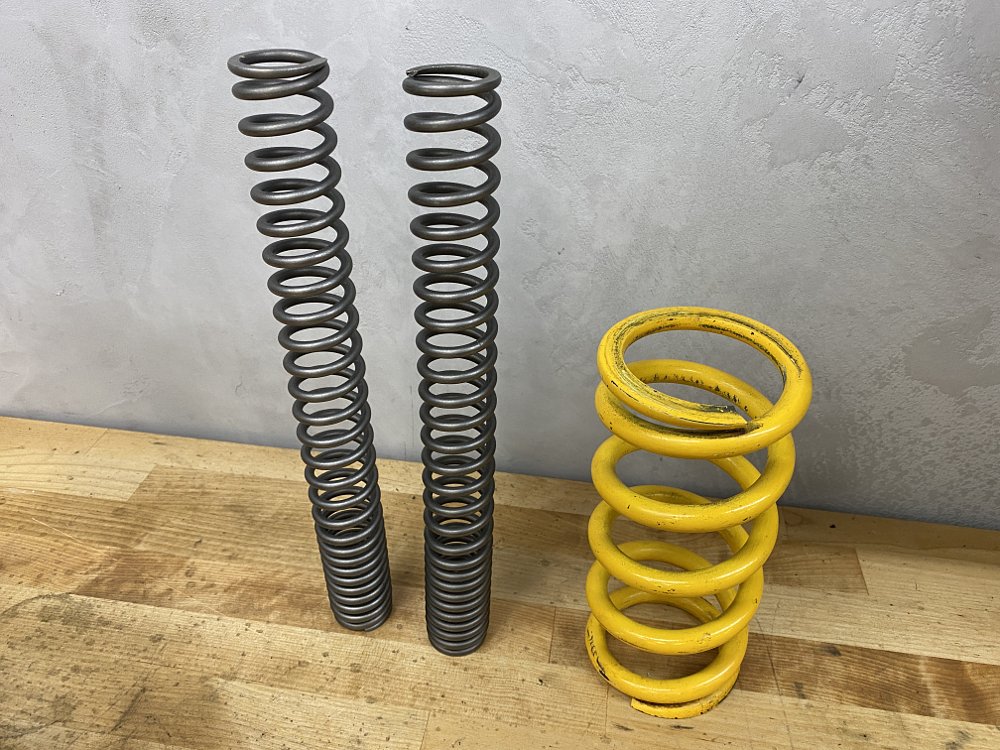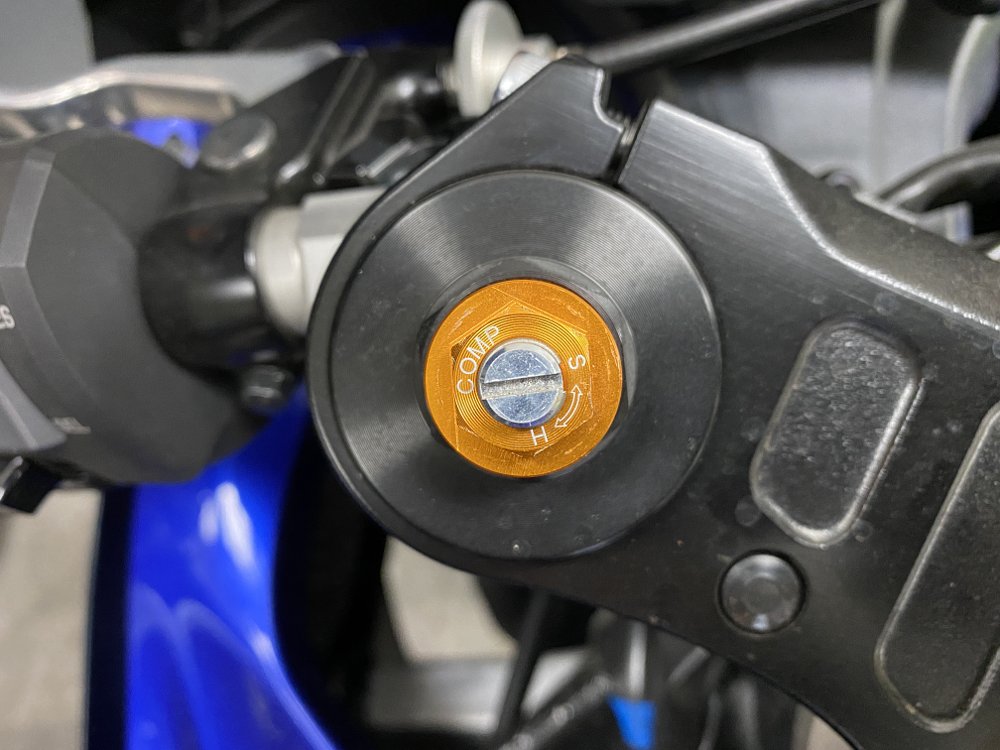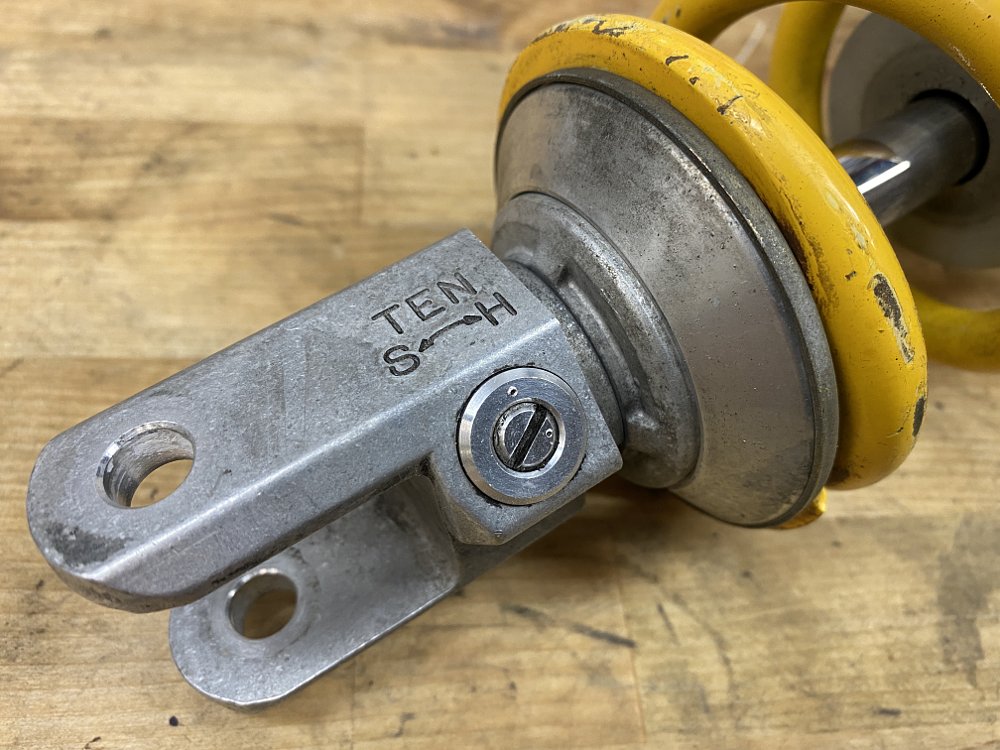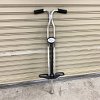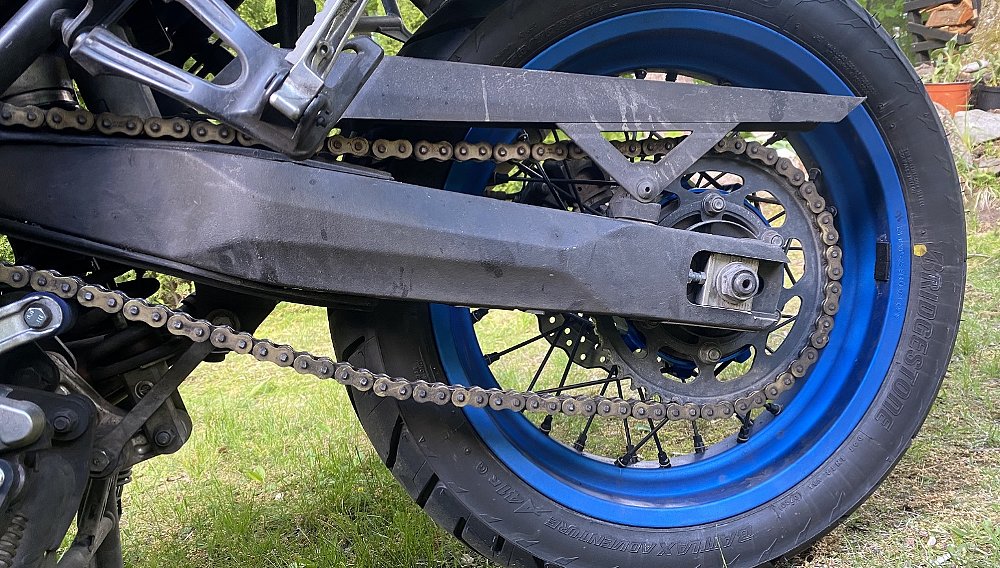As important as suspension is, it’s something that confuses and intimidates a lot of people.
I’m guessing part of that bewilderment stems from the language used to talk about suspension – it’s pretty unique. Spring rate, preload, sag, damping, compression, rebound, hard, soft, slow, fast… These are all words used to describe the function or sensation of suspension action, and it’s important to have an accurate grasp of what they mean so that you can understand what your bike’s suspension is doing and adjust it to your liking, or at least communicate clearly with a suspension tech.
So, get yourself some index cards and a sharpie, because we’re going to crack into some suspension vocabulary.
Spring Rate
First flash card: Spring rate. Springs are quite literally at the core of your fork and shock, and they are there to isolate your backside from jolts and keep your tires in contact with the pavement by allowing them to follow bumps and dips in the road.
Spring rate refers to a spring’s stiffness, and it’s measured in kg/mm or in/lb. The rate describes how much load (weight) it takes to compress the spring a given distance. Take for example a 450-pound-per-inch shock spring. If you put 225 pounds of force on that spring, it will compress half an inch. Put 450 pounds on it and it’ll compress a full inch. Put another 450 pounds on it (900 pounds in total) and it compresses another inch for a total displacement of two inches. You get the idea, and with that load-to-compression relationship in mind it’s easy to understand why having the proper spring rates for your weight is important.
For a comfortable and controlled ride, you need springs that are soft enough to handle bumps but stiff enough to resist bottoming and excessive chassis pitch while braking and accelerating.
Spring preload
Next up, spring preload. And this is an important one, because spring preload is easily the most misunderstood piece of suspension terminology.
Spring preload is how much the spring is compressed from its free length while the suspension component is fully extended.
Consider a shock that’s been removed from the bike. It’s not supporting any weight and it’s fully extended, yet the spring is still compressed a few millimeters by a threaded collar. That’s preload. And with preload, you’re intentionally compressing the spring a little bit, which changes how much load is required to initiate suspension movement. It also alters the total force necessary to completely compress, or bottom, the suspension piece. What it does not
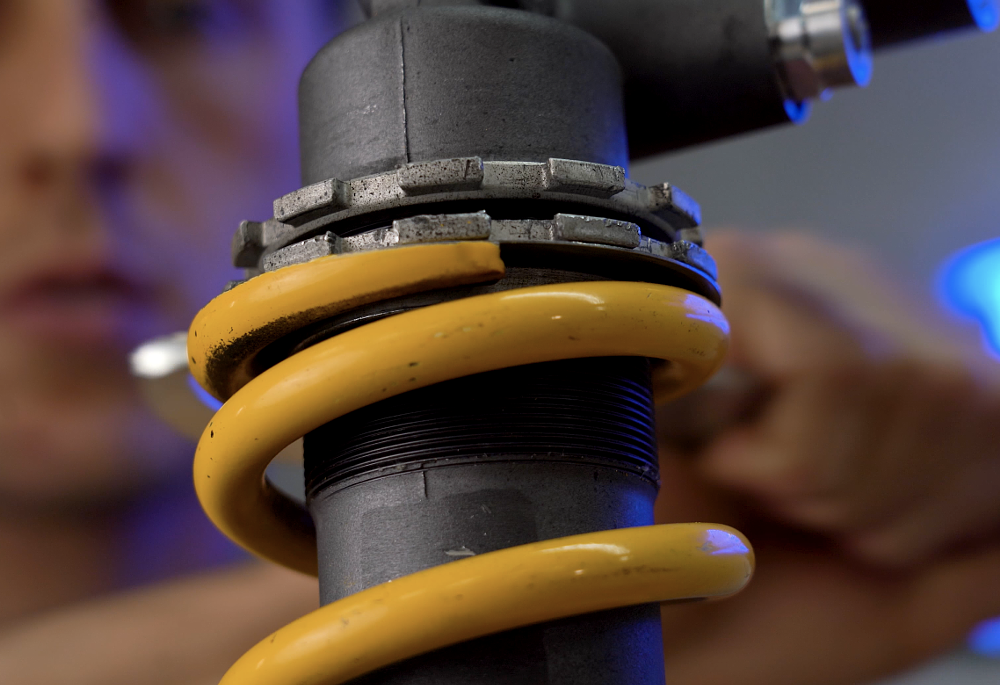
Look at it this way: Your average shock has about three inches of total travel, but the spring itself can be compressed a full five inches. So when you bottom out, it’s not the spring bottoming out, but the shock body. The spring has a lot more travel than the component it’s mated to, and preload allows you to alter which part of the spring stroke you use while riding.
So, adding preload will help prevent your suspension from bottoming by requiring more weight to compress the spring. More preload can give the impression of harder or stiffer suspension, but it’s important to understand that all you’re doing with preload is altering the effective range of the spring stroke used. Preload’s primary purpose, then, is in setting ride height and sag.
Sag
If you’ve ever even been around a conversation about suspension then you’ve no doubt heard of the term sag. It’s our next vocab word and it’s a foundational suspension metric and one of the first things you’ll check and adjust when setting up your suspension.
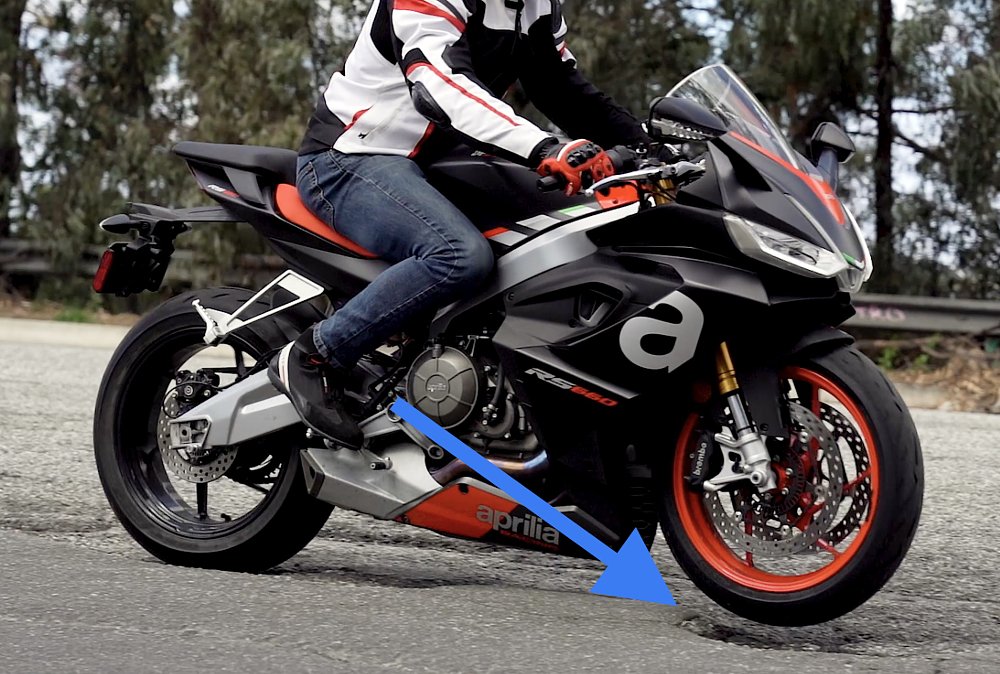
Sag is how much the suspension compresses from a fully extended, unladen position, and there are actually two types of sag. There’s free sag, which is the amount the suspension compresses under the weight of the bike alone, and there’s rider sag, also known as laden sag, which is how much the fork and shock settle with a rider on board wearing all of his or her gear. The easiest way to think about sag is as a measure of how much suspension travel is available to extend
What’s the right amount of sag? As a very general rule of thumb for street riders, rider sag should be about one-fourth of total travel, with free sag being about one-third of rider sag. Your bike’s total suspension travel will be listed in your owner’s manual, or you can look it up online.
If you’re unable to achieve appropriate sag figures with your bike’s available adjustments, or if your free sag and rider sag numbers don’t align, that’s a good sign that your bike’s spring rates are off. Ideally, you want to run a spring that permits you to hit your free and rider sag figures with as little preload as possible.
Damping
And now, damping. For starters, let’s clarify that it’s damping, not dampening. You dampen a rag to clean your face shield, you damp suspension. The word literally means “to reduce the amplitude of a mechanical oscillation.” And oscillating is what a spring will do if its action is left unchecked. Think of a bobble head.
OK, so damping is what regulates the speed with which the suspension component is allowed to compress or extend. And we get damping with oil. Forks and shocks are filled with oil that’s forced through a hole or other restriction as the component compresses or extends. The oil’s resistance to flowing through the restriction is what creates the damping force, which acts as drag to slow down and control the movement.
Without damping, the inertia of the front wheel hitting a bump might push the fork all the way through its stroke, and the fork would pogo back uncontrollably. So damping is important because it keeps the spring action in check, which is critical for traction, handling, and comfort.
Compression damping
Now that you know what damping is, the idea of compression damping ought to be easier to understand. Compression damping refers to the damping force that’s created when the suspension unit is collapsing, or compressing. Hit a bump, grab the brakes, etc. and the subsequent load transfer causes the fork to compress, and there’s a dedicated compression damping circuit that imparts some drag on that movement.
Rebound Damping
Rebound damping is the damping force that’s in play when the suspension unit extends after being compressed. It’s also referred to as tension, which is why you may see “ten” stamped next to the adjuster on the top of your fork, or the bottom of your shock.
The verbs and adjectives
Spring rate, preload, sag, and compression/rebound damping are the basic nouns of suspension, but there are also lots of adjectives and verbs used to talk about suspension. Some common ones are hard or soft, and fast or slow.
Slow and fast don’t refer to the speed you’re traveling on the bike, but rather the speed at which the suspension component is moving. When you hear slow or fast, you know someone is talking about damping. However, when you hear hard or soft, they may be referring to springs or damping since both spring and damping settings can cause a fork or shock to feel soft or hard.
Make sense? If it’s not crystal clear just yet, don’t worry, it can take a while for all of this suspension stuff to sink in. Maybe just reread this article or watch the TSM vid on the same topic on repeat until it does.





